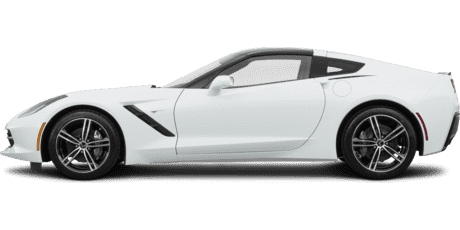Are these really drawbacks?
The world has had a year to evaluate the new mid-engined C8 Chevrolet Corvette. Owners have had it for nearly six months now, and you’ve certainly heard us talk aplenty about it – both good and bad. Here’s another take on bad aspects of the new C8, but before you Corvette fans get all snippy in the comments, know that in this context, these criticisms really aren’t criticisms at all.
Also, take heart in knowing this feedback comes not from a disgruntled GM hater or another Corvette owner looking to voice an opinion. This time we turn to Engineering Explained for some in-depth insight into five aspects of the C8 that some might think are very underwhelming. In reality, the video shows how they actually work well and fit properly with the car’s design and mission.
Brake-by-wire
When you hit the brakes in the C8, you’re actually telling a computer how hard you want to stop, which then pumps the brakes to make it happen. Enthusiasts love having manual control over a vehicle and generally hate such intervention, because what happens if the electric system fails? Not to fear, because the pedal can still actuate the master cylinder, sending brake fluid to the calipers and stopping the car. In fact, the electric system can even keep the brakes working if the fluid gets hot enough to boil.
Longer Braking Distance
One of the C8’s criticisms is its longer stopping distance compared to the outgoing Corvette C7. Managing weight distribution under braking in a mid-engine car isn’t as easy as a front-engine design. In short, it’s easier for the back to step out under hard braking. The video explains that C8 engineers dialed the rear brakes down a bit to help prevent that from happening, especially in track conditions. As such, the tradeoff for a slightly longer stopping distance is better control while stopping.

Motor1.com Car Buying Service
Understeer
Speaking of better control, everyone knows about the C8’s tendency to understeer. It’s a negative mark, but is it really in this case? As the video explains, understeer is safer and easier to predict, and like the brakes, it’s dialed in by design since a mid-engine car is more prone to lift-throttle oversteer. With the C8 being affordable to a wider audience than typical high-end supercars – and considering the Corvette’s primary demographic who may have never driven a mid-engine car – this was the safe choice.
The video also points out that those who want sharper handling can easily adjust the C8’s suspension to dial the understeer down. In fact, Chevrolet even offers recommended settings for spring rate, camber, and tire pressures to make it happen.
Pushrod V8
Everybody knows that pushrod engines are old-school tech created when dinosaurs ruled the Earth. Why isn’t there sophisticated DOHC V8 in there? First of all, there’s nothing new and high-tech about a DOHC engine. It's just as old as pushrod, dating all the way back to 1912. It’s a bulky design that can rev, but at a cost of added weight and complexity. The Corvette’s 6.2-liter pushrod V8 is smaller, lighter, and consists of fewer parts which also makes it cost-effective. It's arguably a more reliable design requiring less maintenance. As such, this isn't a better or worse approach to making power. It’s just a different approach.
Tires
Will anyone drive the C8 Corvette in the snow? That remains to be seen, but Chevrolet offers the C8 with standard-issue all-season tires and that seems like a real head-slapper for something designed to dominate dry tarmac race tracks. Here’s the thing – the tires are still Michelin Pilot Sport All Seasons, and as the video indicates, they’re capable of pulling 0.9G on launch and over 1 G on deceleration. They are still incredibly grippy, but the softer all-season compound also makes them more predictable. Again, it’s a minor sacrifice in all-out grip for better drivability. That seems to be a theme with the C8, at least according to this list of alleged faults.
For the C8 naysayers, there’s one more tidbit to consider. The Stingray is the base model Corvette. We know a Z06 is coming soon that addresses at least two issues presented here. The track-focused car won’t get all-season tires, and it will have a snarling DOHC V8 behind the driver. As for the rest? We’ll just have to wait and see.





